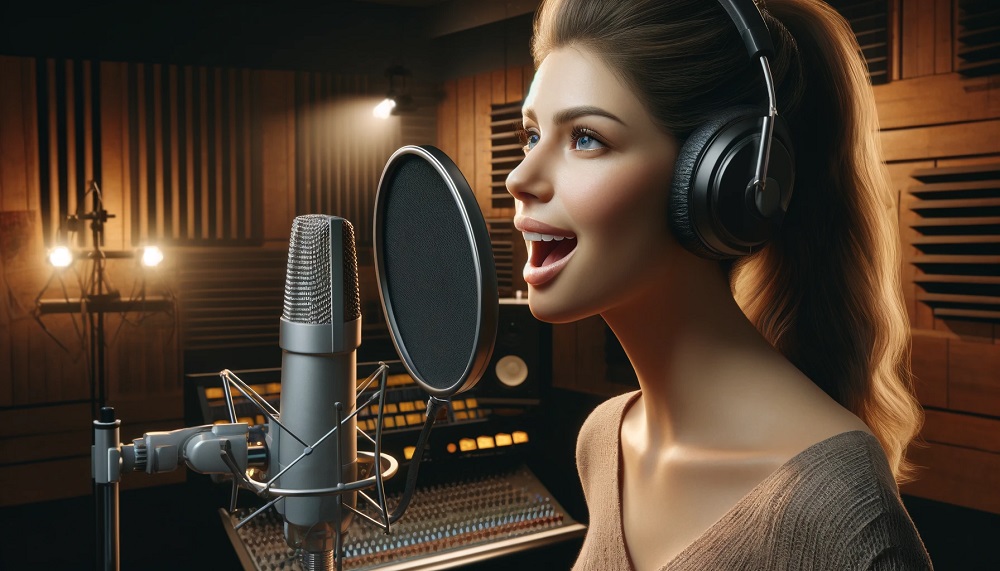Recording music that resonates with listeners requires more than talent; it demands cutting-edge techniques and technology. Industry professionals have honed their craft through years of experience and experimentation. Here are some top recording techniques that can elevate your sound professionally.
1. Understanding Microphone Placement
Microphone placement is critical in capturing the true essence of sound. Industry pros often spend considerable time finding the perfect spot for each microphone, ensuring they capture the best possible audio quality. The distance and angle can significantly impact the sound’s clarity and warmth. For instance, placing a microphone too close to a guitar amp might capture a harsh tone, whereas positioning it a few feet away can provide a richer, fuller sound.
Tips for Microphone Placement:
- Vocal Recording: Position the microphone at mouth level, about 6-12 inches away.
- Guitar Amplifier: Place the mic slightly off-center from the speaker cone.
- Drum Kit: Use a combination of overhead and close mics to capture the detail and the ambiance.
2. Utilizing High-Quality Preamps
Preamps are vital in shaping the sound before it hits the recording medium. Top-notch preamps add depth and character to recordings, enhancing the natural qualities of the instruments and vocals. Many professionals opt for vintage preamps, known for their warm, rich tones, which can bring a unique character to modern recordings.
Popular Preamp Choices:
- Neve 1073: Renowned for its warmth and musicality.
- API 512c: Celebrated for its punchy and clear sound.
- Universal Audio 610: Favoured for its vintage tube warmth.
3. Employing Room Acoustics
The recording environment’s acoustics can dramatically affect the sound. Industry pros often invest in acoustic treatment to control reflections, echoes, and standing waves. Proper acoustic treatment can make a modest recording space sound like a high-end studio, providing a clean, clear, and balanced sound.
Acoustic Treatment Essentials:
- Bass Traps: Placed in corners to control low-frequency buildup.
- Absorption Panels: These are used on walls to reduce reflections and reverberation.
- Diffusers: Scatter sound waves to create a more natural room ambiance.
4. Advanced Editing and Mixing Techniques
Editing and mixing are where the magic happens. Industry pros use sophisticated software and plugins to polish their recordings. Techniques such as equalization (EQ), compression, reverb, and delay enhance and balance the sound. Subtle adjustments can significantly affect the final product, ensuring each mix element shines through.
Key Mixing Techniques:
- EQ: Used to carve out space for each instrument, ensuring clarity.
- Compression: Controls dynamics and adds punch to the mix.
- Reverb and Delay: Adds depth and space, creating a sense of ambiance.
5. Mastering the Art of Overdubbing
Overdubbing allows for layering multiple tracks to create a fuller, richer sound. Industry pros often use this technique to add harmonies, double vocals, or layer instruments. It requires precision and creativity to ensure each layer complements the others without overcrowding.
Effective Overdubbing Practices:
- Double Tracking Vocals: Adds depth and emphasis.
- Layering Guitars: Creates a thicker, more powerful sound.
- Harmonies: Enhances the musicality and richness of the vocals.
Conclusion
Employing these advanced recording techniques can significantly elevate the quality of one’s recordings. From precise microphone placement to mastering the art of mixing and overdubbing, these methods are essential tools in the arsenal of industry pros. Whether working in a high-end studio or a recording studio Hackney, applying these secrets will help you achieve a stellar sound that stands out in today’s competitive music landscape.







